A hobbyist’s recommendations for where to practice drawing perspective throughout the city of Nuremberg.
If you are new here, welcome to Franconia! If you already live here and have stopped actively exploring this beautiful region, maybe this will help you rediscover the area we share. I moved to Nuremberg about a year ago and have been slowly sketching my way through the old town.
I’ve been sketching for a while now, but I always find aspects I want to improve in my work, even though I never plan to sell my art and only create it for myself. I also like to encourage people who have taken up drawing, sketching, painting, or even photography in the past to continue doing these creative hobbies. With this in mind, I sought out a few locations in Nuremberg that allowed me to practice drawing perspective– something I struggle within my own pictures.
The Tate Museum in London defines perspective as “a system for representing objects in three-dimensional space on the two-dimensional surface of a picture.” This is incredibly important in art because you want your drawings to have dimension and depth and, unless intended, not to appear flat.
Knowing this definition and my goal, I took to the streets and began searching for beautiful spots that would allow me to practice sketching. I’ve compiled a list of five spots in Nuremberg that offer interesting challenges to draw, sketch, paint, or photograph, starting with the easiest and going on to the most difficult. Each location was chosen to practice different aspects of creating perspective.
Looking to practice easy perspective?
Try the Way of Human Rights.
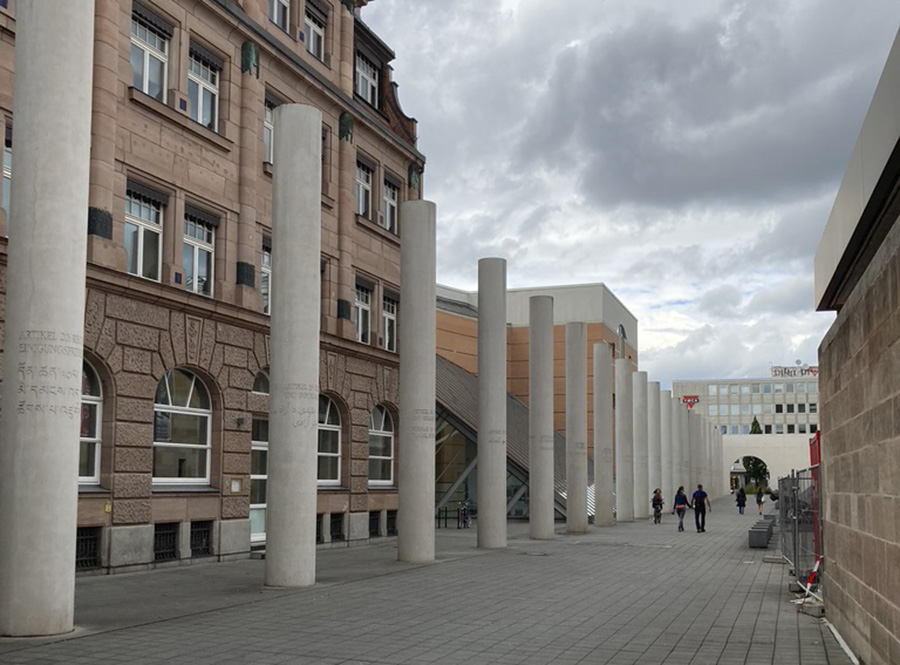
Way of Human Rights, German National Museum.
© Carolina Adams
History:
In 1988, a jury of innovators came together to select an appropriate and stimulating design that would complement the extension to the German National Museum. Dani Karavan submitted an idea that found the jury’s approval. His concept of 27 white columns, each with a text from the Universal Declaration of Human Rights, once in German and once in another language, a cypress oak tree, and an arch was installed and presented in 1993. It now stands as a symbol of acceptance and hope.
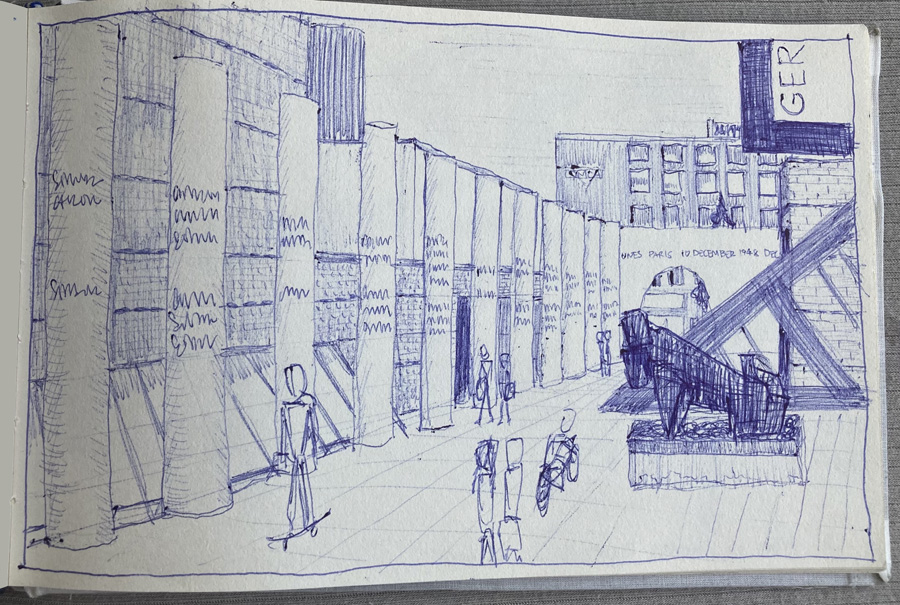
Way of Human Rights
© Carolina Adams
Why I chose this location: In addition to the current relevance of promoting human rights and acceptance, it is also a really simple scene for practicing perspective drawing.
My approach: I recommend starting with your perspective dot in the middle of the page on the right side. Draw a few very faint guidelines outward toward the edge of the picture to where you want the objects to stop. I drew slightly above the top left corner and slightly below the bottom right corner. Once that is complete, draw the columns. Add as many details as you prefer.
Things to note for beginners: the further a series of equally spaced objects is away, the closer together they appear. Art 101.
Looking for curved lines and a bit of European architecture?
Check out the Kettensteg along the Pegnitz river.
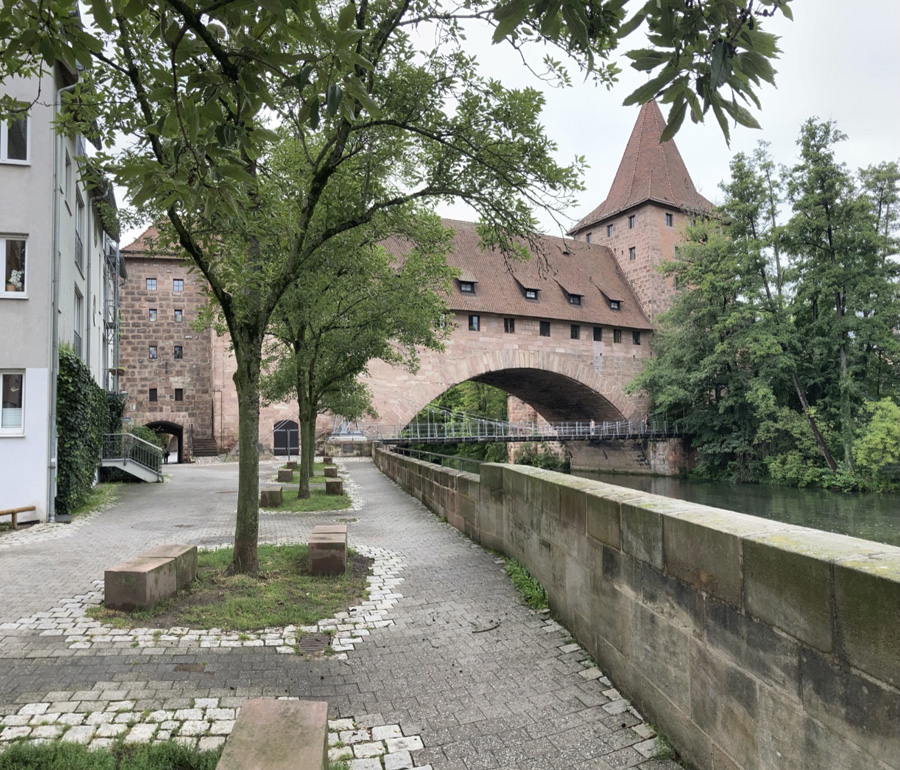
Kettensteg, Nuremberg
© Carolina Adams
History: The Kettensteg, a chain footbridge constructed in 1824, replaced an earlier wooden structure to accommodate foot traffic across the Pegnitz. It was renovated in 2010, improving its structural stability. You can now walk across it without fear of falling into the water. Go for it!
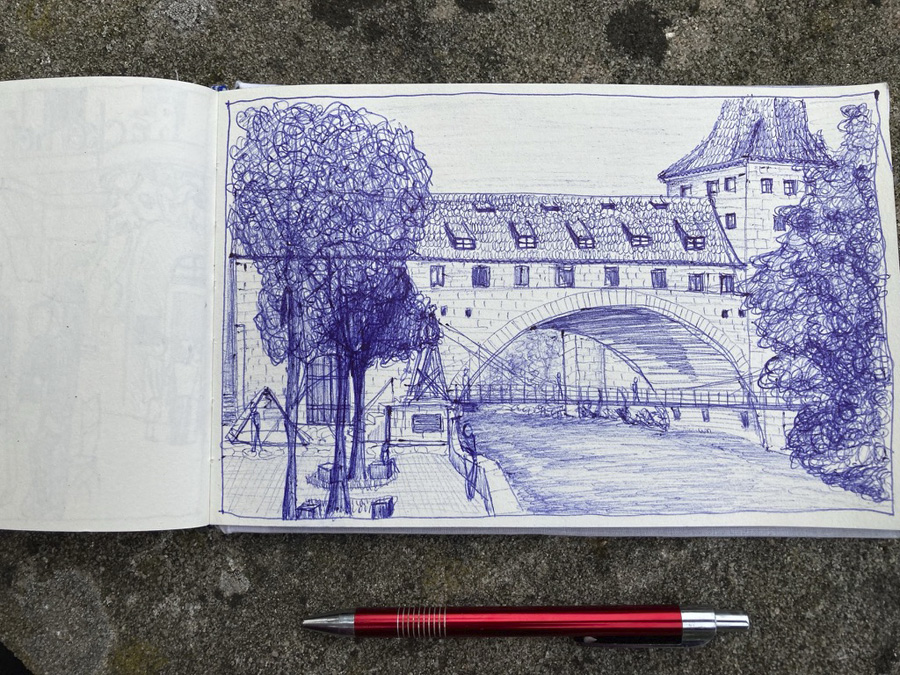
Kettensteg, Nuremberg
© Carolina Adams
Why I chose this location: I wanted a place that was easy to walk to with a simple but beautiful design that would also allow artists to draw perspective with a simple curve.
My approach: From the picture, you can see that my perspective dot is far right of the actual photograph, so I just positioned my sketchbook and then picked a spot on the other side of the river bank to use as my perspective dot. It was not an easy task but it sufficed. I started off drawing the straight lines and ignoring the trees. Once I had drawn my outline, I moved on and did a rough line to show where the Kettensteg was. I didn’t add detailing until after I had an idea of how well the drawing fits together.
Things to note for beginners: The underside of the bridge, though curved, still requires you to keep straight lines.
Looking for a beautiful music venue made from a church ruin?
Head towards the City Library, then walk behind and find the amazing Katherinenruine.
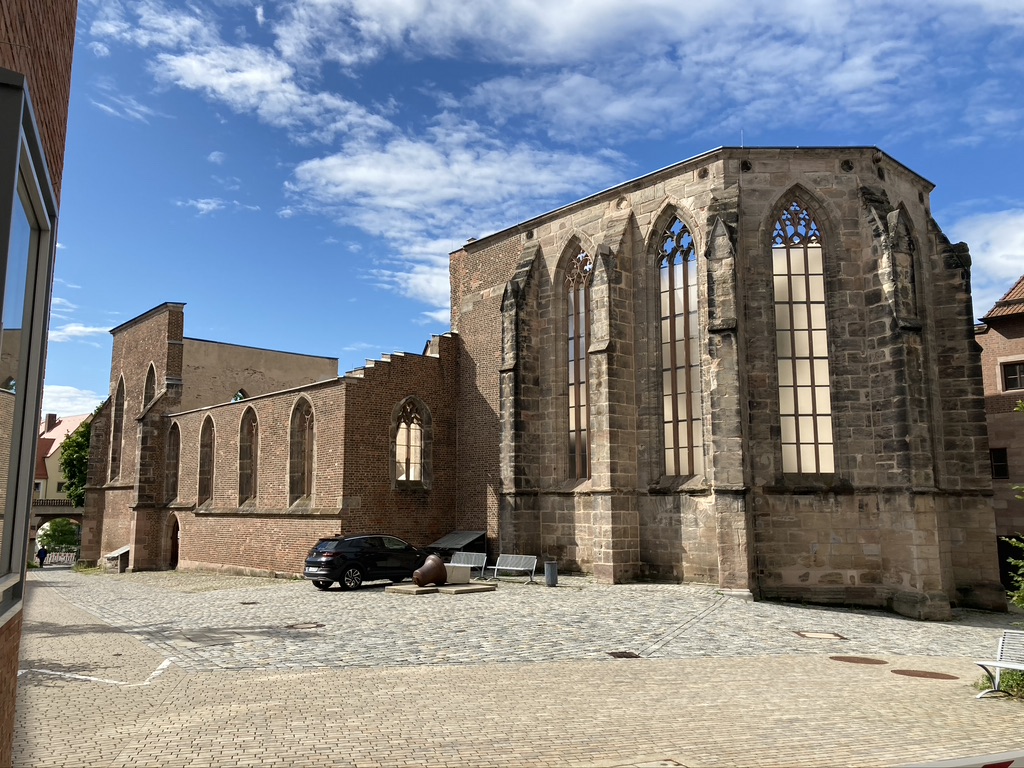
Katharinenruine
© Carolina Adams
History: This glorious ruin used to be Catherine’s Monastery, which included a world-renowned library and a cloister, now part of the City Library. Katharinenruine has, in the more recent past, housed concerts in the open-air theatre.
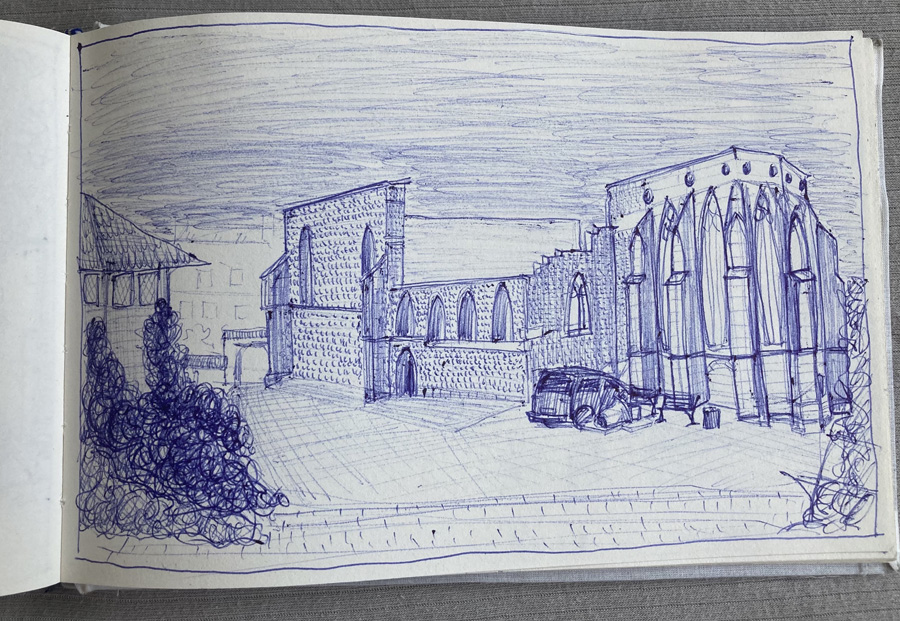
Katharinenruine
© Carolina Adams
Why I chose this location: I wanted a building that had lots of different planes, thus presenting a perspective challenge. It is also fairly central, located just behind the City Library and near the Cinecitta cinema.
My approach: Start with your perspective dot in the middle of the left side. Draw your light guidelines outwards toward the top and bottom right corners. Because this building has a few separate building parts, it helps to separate the page into a few sections.
Things to note for beginners: This building is not on a flat surface, and you have to pay attention to the curve of the ground below it. The building accounts for this by adding large stones to accommodate for the cattywampus structure. Pay attention to where those are.
Looking for a quiet place to practice drawing straight lines?
Check out St. Egidien Church
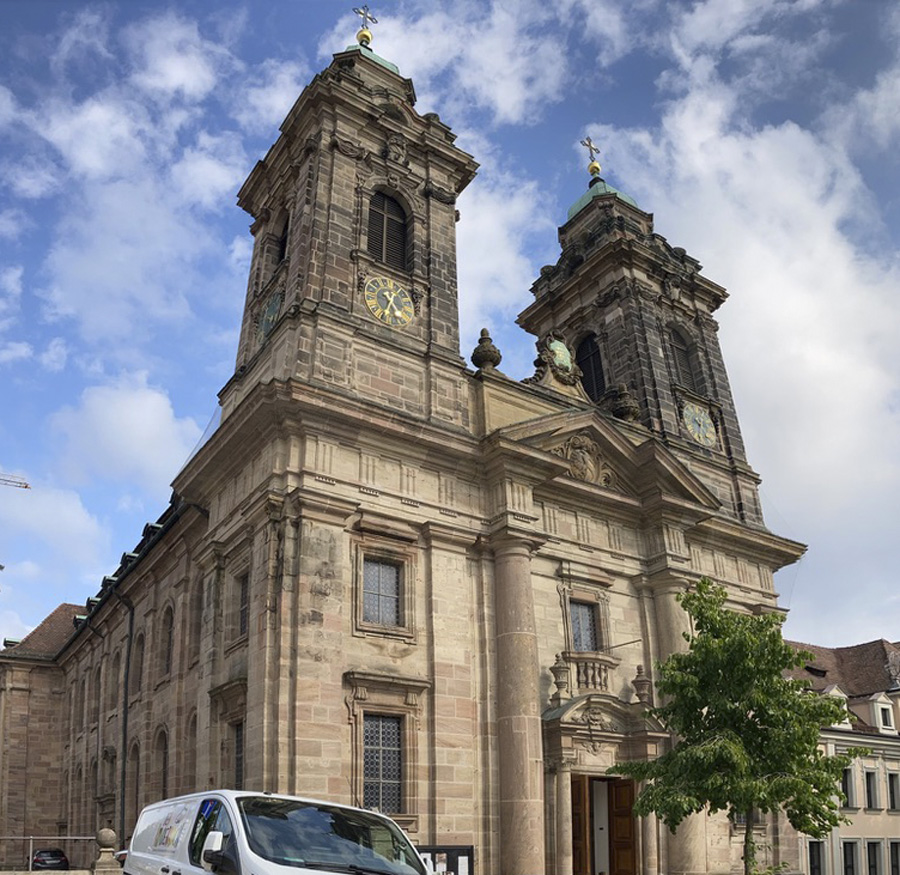
St Egidien Church, Nuremberg
© Carolina Adams
History: The first church built here in the 1100s was royally adorned by Emperor Conrad III and his wife, Gertrud. As a royal church, it could administer royal possessions, agriculture, and forestry. Unfortunately, in the mid 1400s, the church, now a Benedictine Abbey run by Irish monks, was hemorrhaging money so badly that it started mortgaging parts of the altar! German Benedictines took over and the church was partially rebuilt. In 1525, the monastery was dissolved due, in part, to the Reformation. Several attempts by the Benedictine order to recover the monastic property proved unsuccessful. In 1696 the church was destroyed by fire, but in 1711 rebuilt in the baroque style we see today. It sustained severe damage during the Second World War and was restored between 1946-59.
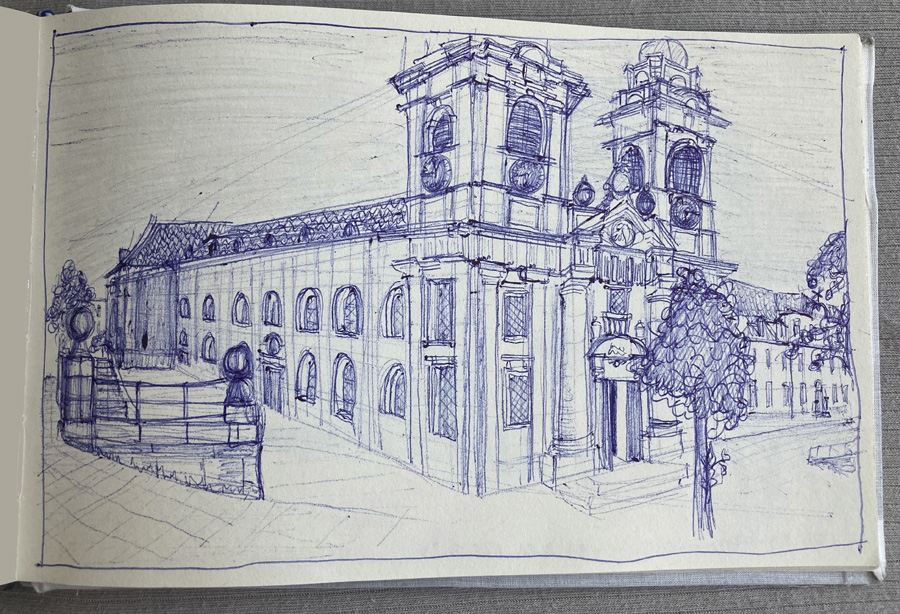
St. Egidien Church, Nuremberg
© Carolina Adams
Why I chose this location: With its straight lines, quiet atmosphere, and a nice place to sit, it is good practice for your basic perspective. Don’t let it fool you though! The roof itself was so complicated, and it took me two days to draw.
My approach: Take a seat and draw two perspective dots, one on either side of the page, before creating your first vertical line of the northern tower. From there, draw your lines connecting the windows and doors to the perspective dot.
Things to note for beginners: Pay attention to where the sun is. We are in the northern hemisphere, so your shadow will be on the north side of the building. A portion of the church sticks out further north so pay attention to your shadows at different times during the day.
Looking for an iconic Nuremberg location with lots of perspective?
You may recognize this location as the spot with the sculpture of a carnivorous rabbit. It’s also across the street from the house of Nuremberg’s most beloved artist, Albrecht Dürer.
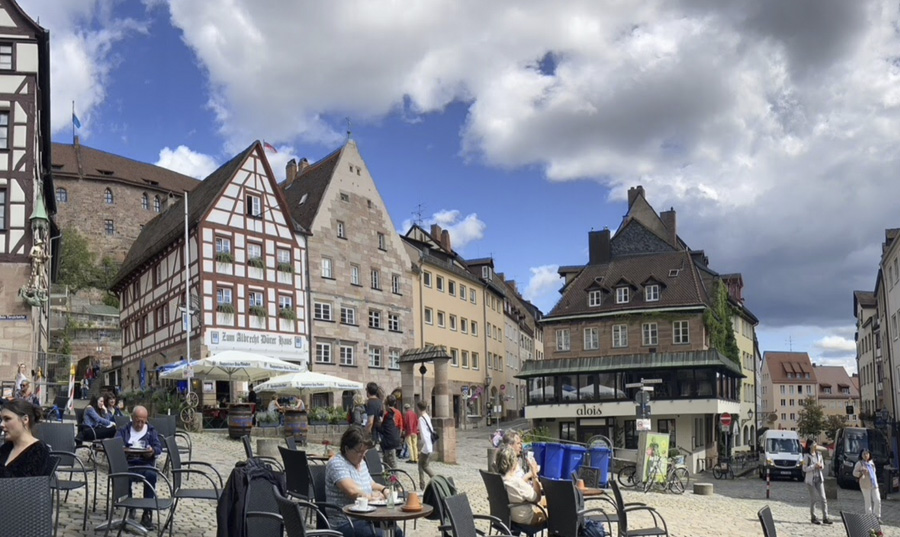
Tiergartnertorplatz, Nuremberg
© Carolina Adams
History: Albrecht Dürer lived from 1471- 1528. He was a multi-talented artist, and his home for most of his life was our wonderful Nuremberg. Dürer’s painting, Der Feldhase, was the inspiration for Der Hase, the rabbit sculpture that Jürgen Goertz created in 1984, located in this same square.
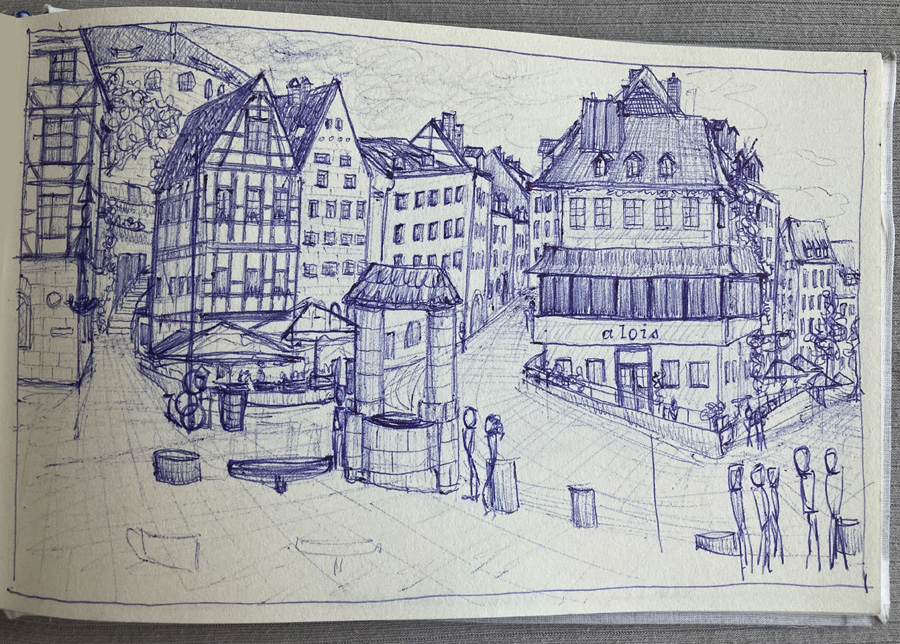
Tiergartnertorplatz, Nuremberg
© Carolina Adams
Why I chose this location: Almost every tourist coming through Nuremberg will see this area, as both Albrecht Dürer’s House and Der Hase are located here. It is a place many people will recognize, and it has lots of perspective to practice.
My Approach: Because the buildings face in slightly different directions, it’s best to focus on each one individually. The different faced facades allow the road to curve upward into the hill and downward into downtown. Start with one building and work your way out.
Things to note for beginners: This is a very complex location to draw. Take your time and focus on what’s close and what’s far. In this view, you can see two half timbered houses, which are the easiest to draw because they give you your perspective lines. This drawing took me several hours to complete.
Once you’ve taken this short drawing excursion, upload your sketches, drawings, and paintings of these spots and tag us with #epfranconiacreates.
If you enjoyed this post, you may be interested in our upcoming event, Coffee and Cakes, where we will attend an exhibition and then hit Literaturhaus for coffee and cake and drawing afterwards!
Research:
https://www.locationscout.net/locations/1032-nuremberg/spots
https://www.instagram.com/nuernbergspots/?hl=en
https://www.thecrowdedplanet.com/things-to-do-in-nuremberg/
Next articles:
- Places with lots of activity
- Texture
- Light and dark
- Color
- Positive Space and Negative space
- Symmetry
- Inktober places to draw


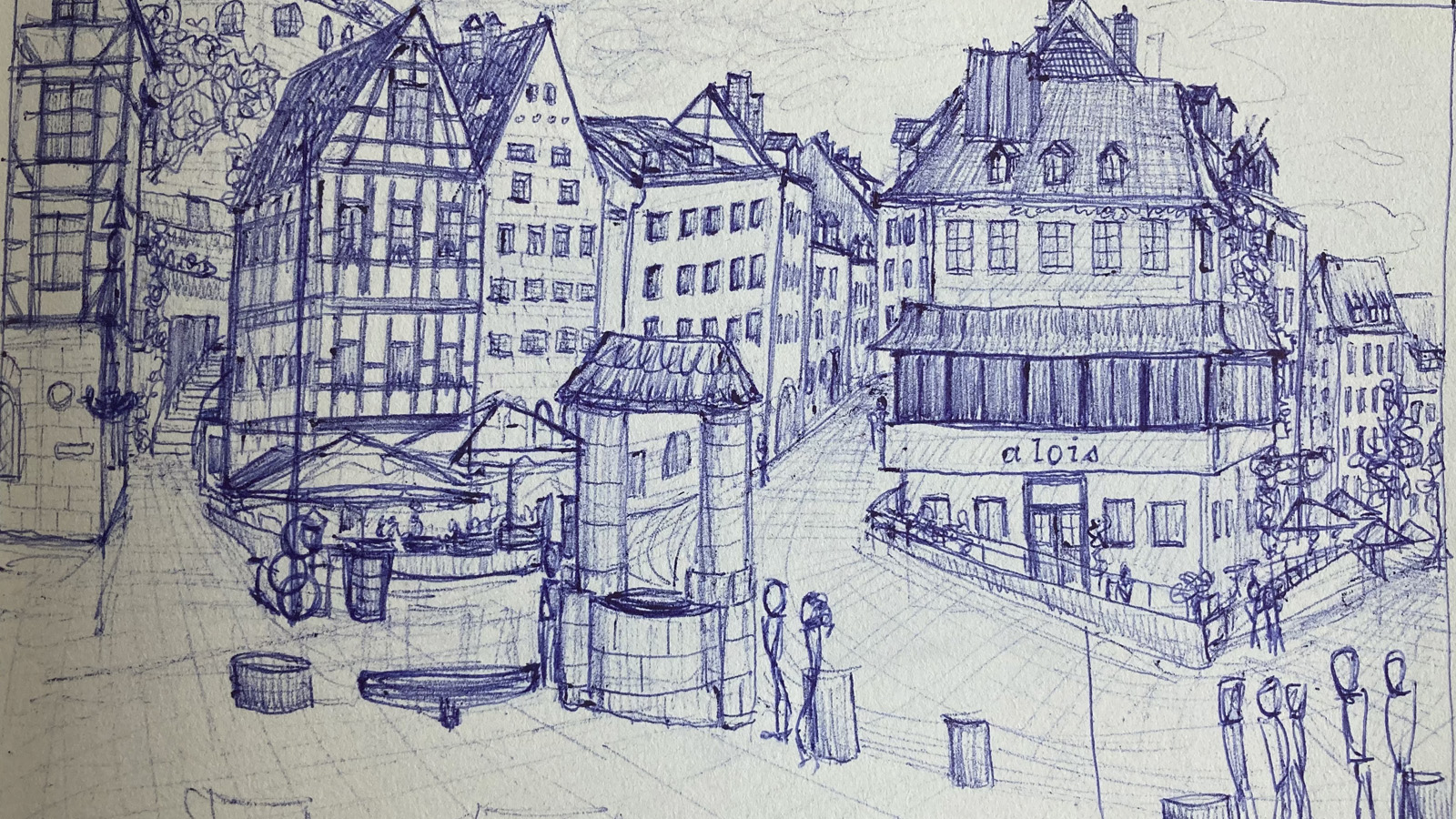

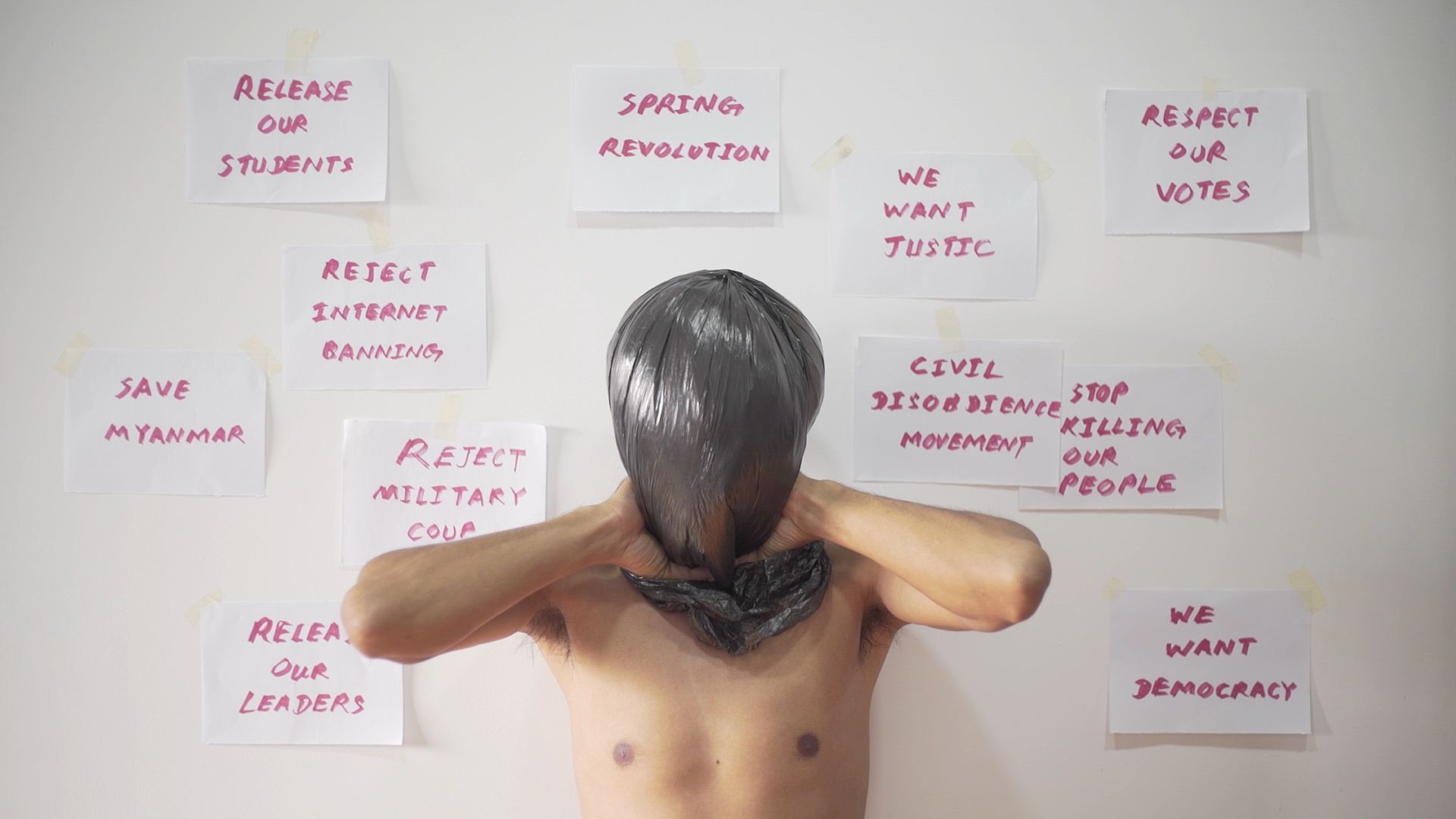

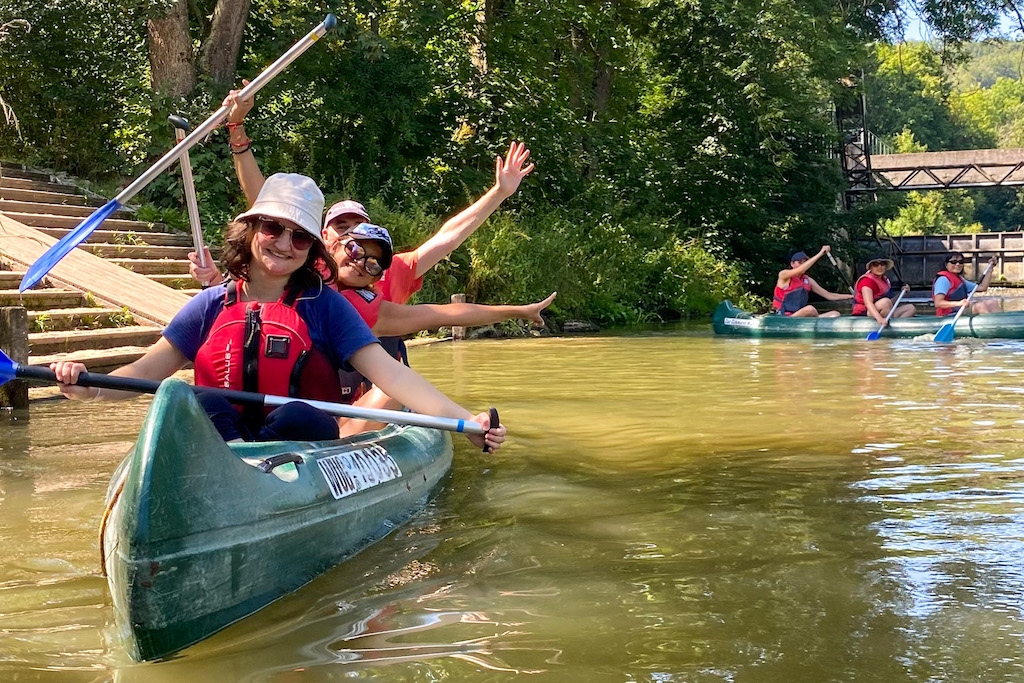
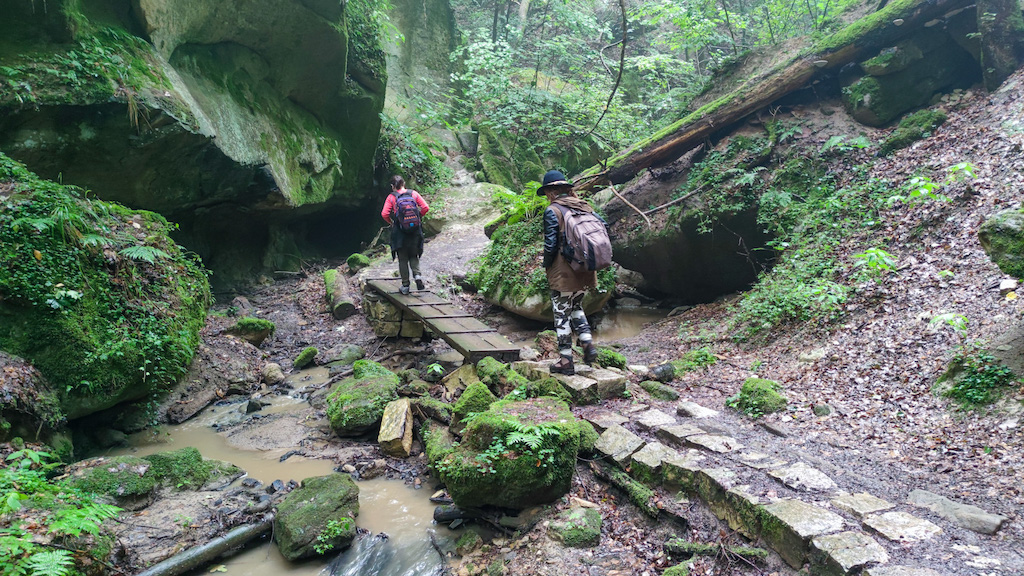
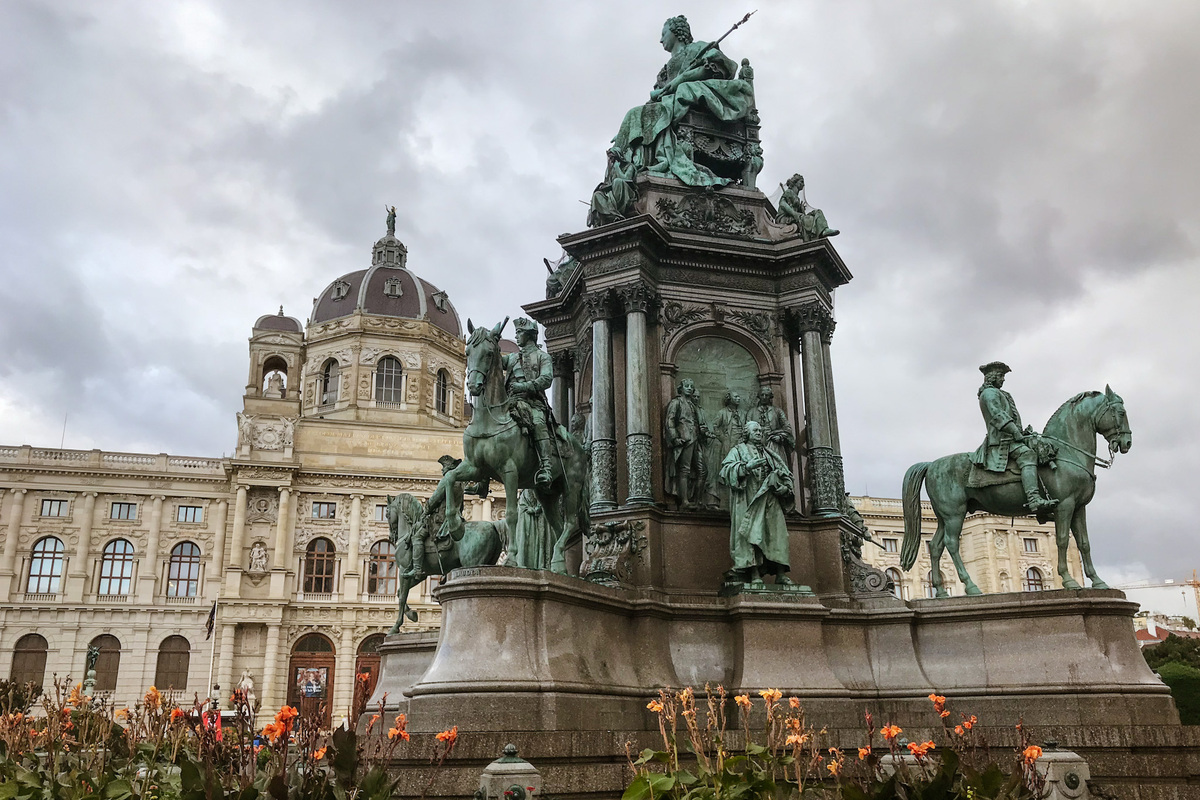

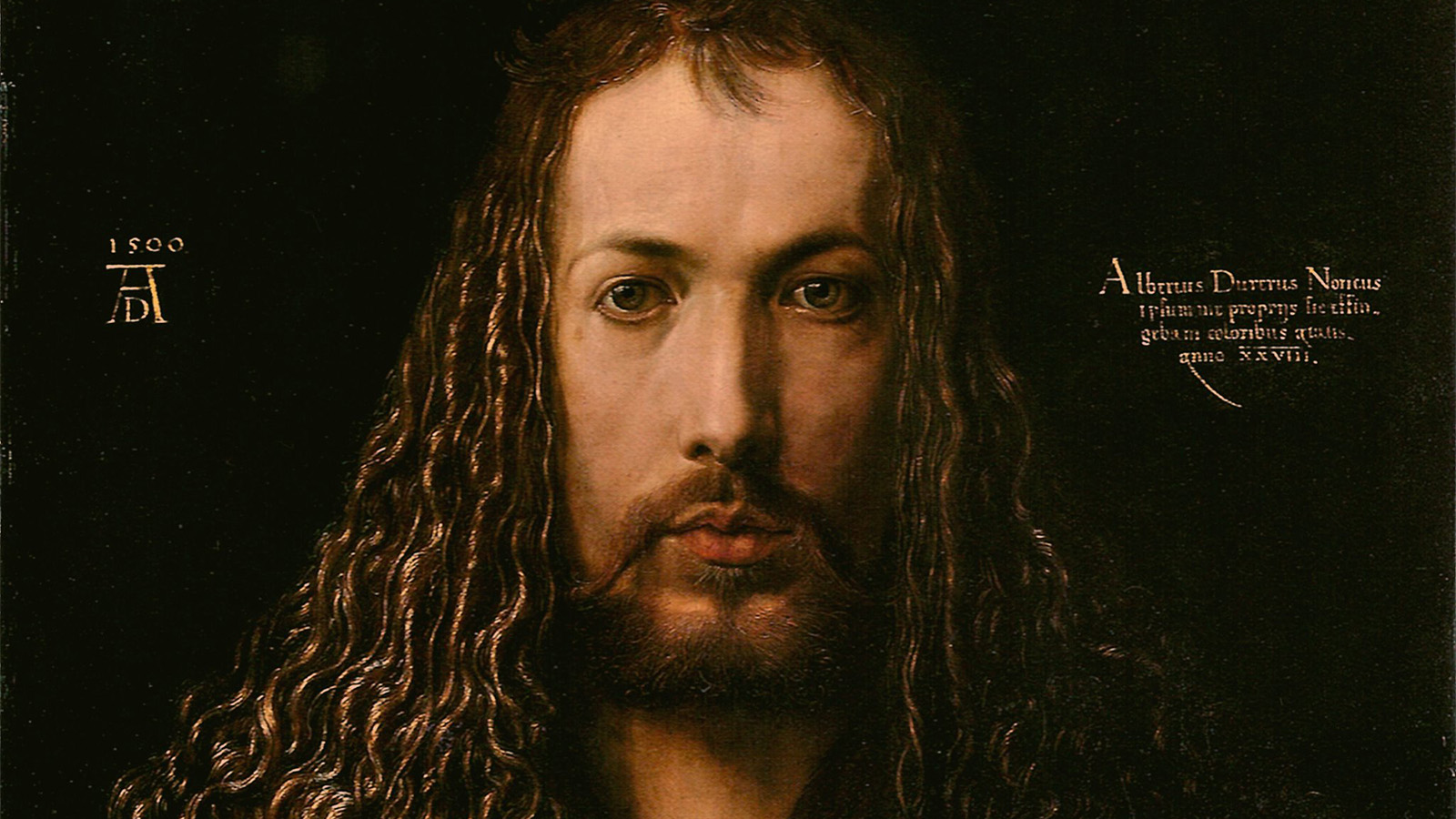


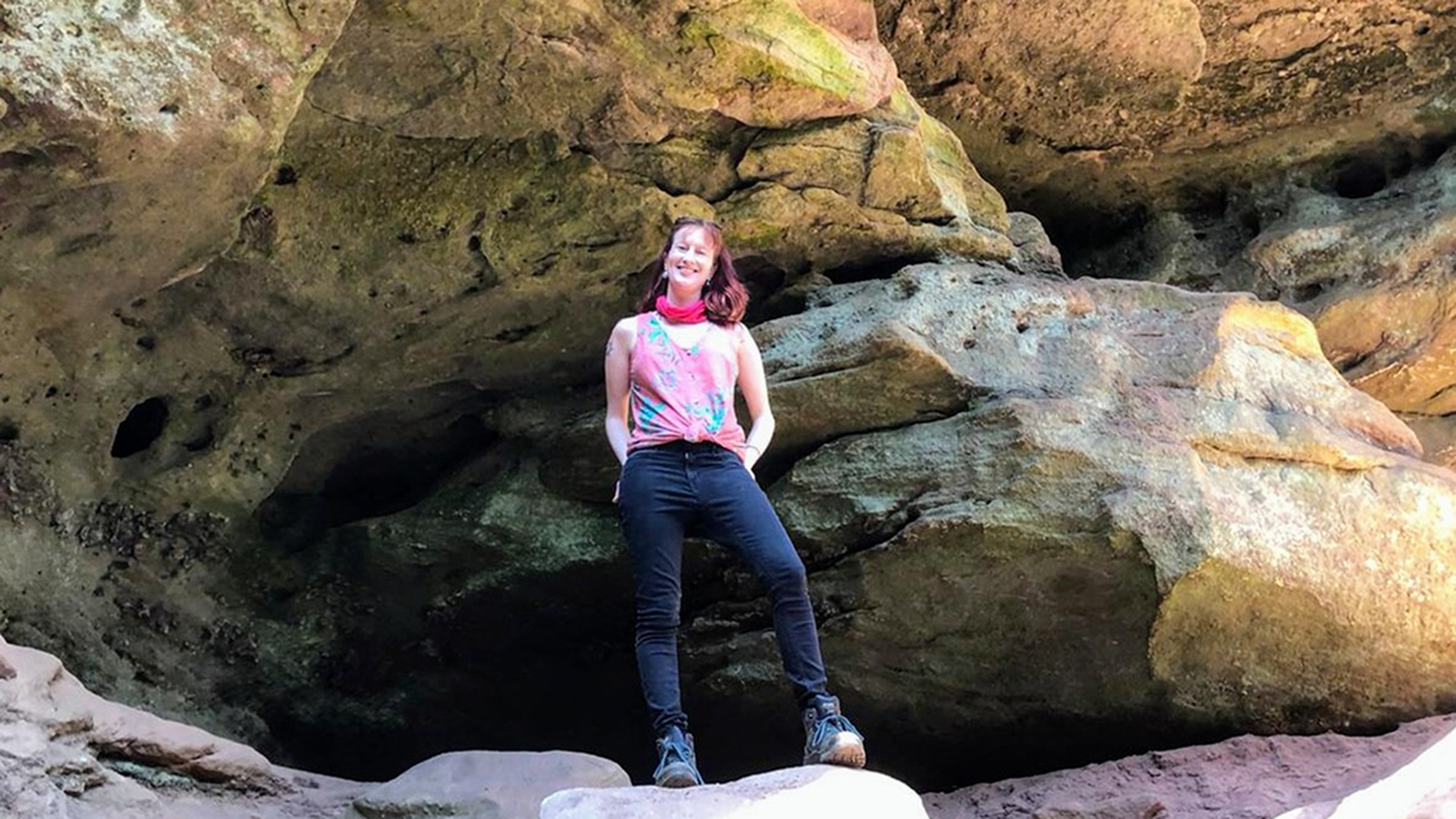
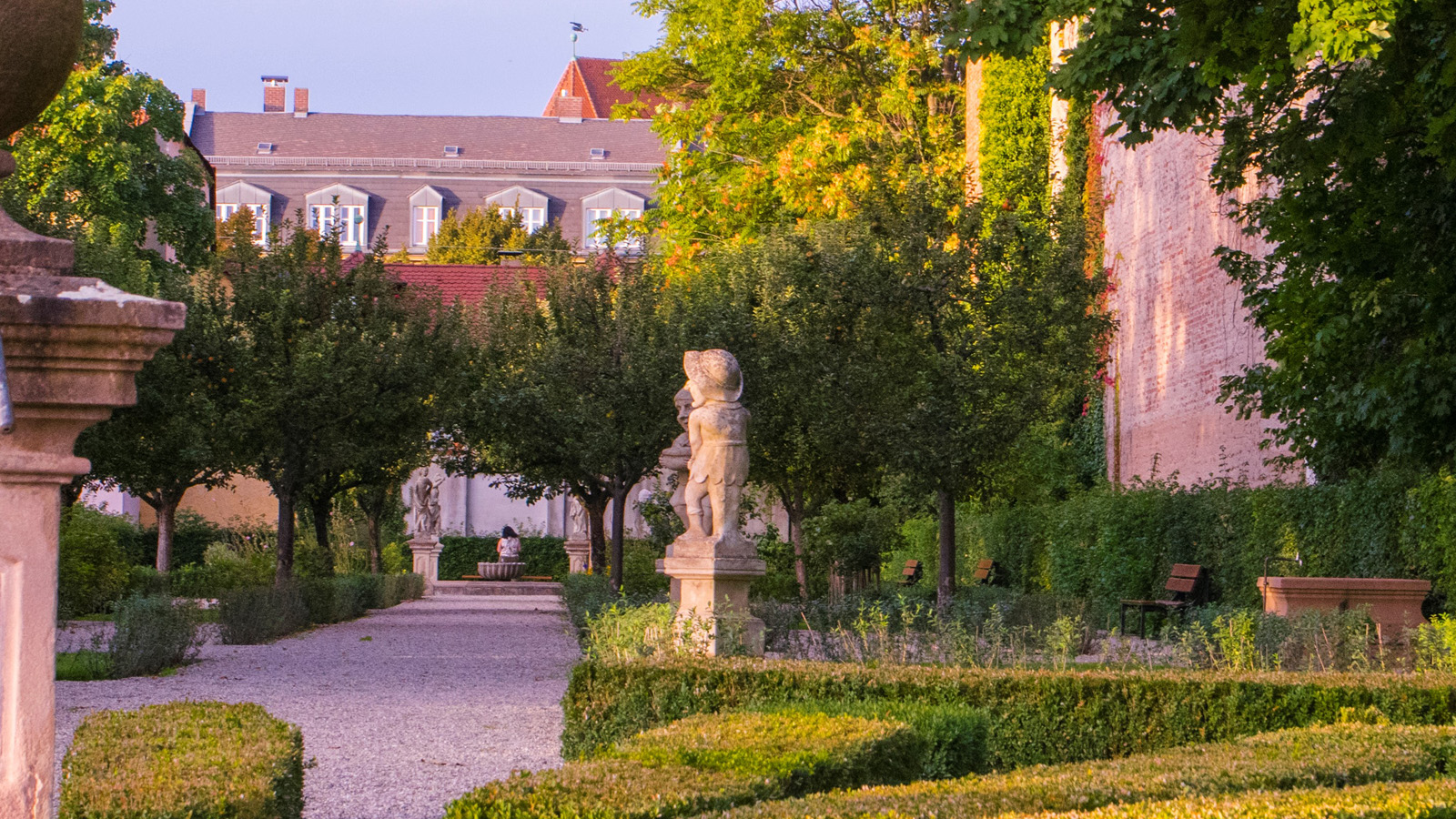
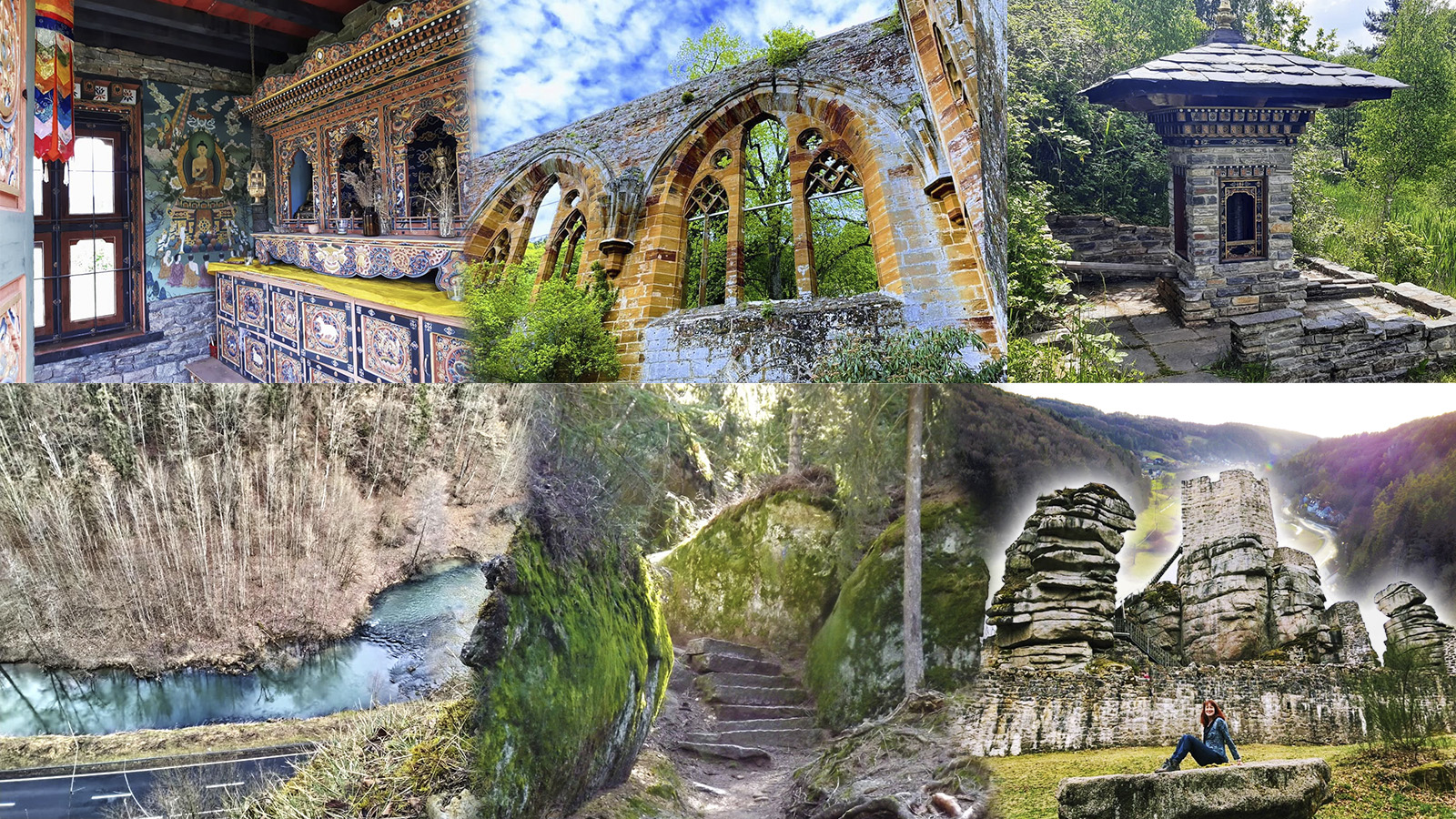

What a wonderful tour of Nurenberg!